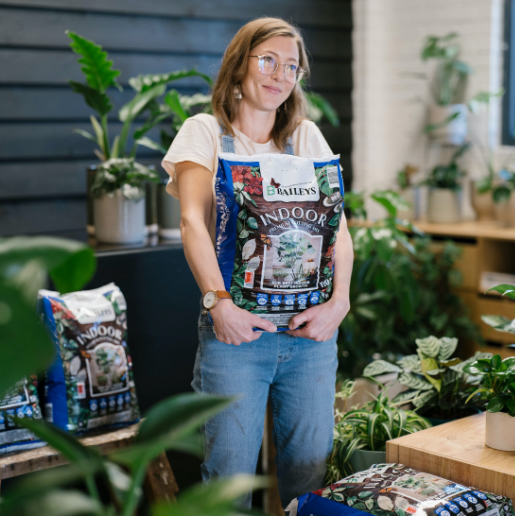
Join our Great Gardens Club!
Sign up to enjoy 15% off your first purchase from Baileys online. Plus, get our monthly WA gardening tips, latest news and promotions straight to your inbox.

Sign up to enjoy 15% off your first purchase from Baileys online. Plus, get our monthly WA gardening tips, latest news and promotions straight to your inbox.
Tomatoes love the heat, so spring and summer are prime fruiting times. August and September are the earliest months to get planting. It's a good practice to add a few more plants every month from October to February to extend your picking season out to a possible 8 months.
Tomatoes are the most popular homegrown vegetable and there are lots of reasons for this. They are tremendously productive; you can pick fruit over 5 months from one plant. If you grow cherry tomatoes the crop could amount to more than 1000 fruit.
Location
Choose a sunny warm spot in the garden. Tomatoes do best when receiving full sun all day up until summer really bites in Perth. This is usually in February when we get a run of temperatures over 35 degrees. If its possible to cover the plants with shade cloth during these times, do so - it offers great relief to your plants.
If planting in early spring or late autumn, try to maximize warmth by planting next to west or north facing walls. The reason: these get an extra hit because of their exposure to afternoon sun as well as radiated and reflected heat.
Soil Preparation
If growing in pots or tubs, choose Baileys Veg & Herb Premium Planting mix. If you are planting in the garden then amend the soil with generous quantities of Baileys Clay & Compost (for sandy soils) or Soil Improver Plus. Deep planting works very well for tomatoes as they can sprout new roots along the covered stem.
The majority of tomato varieties are indeterminate, including most heirlooms and cherry types. Tall growing, so called indeterminate types are essentially climbing plants and as a result, need some form of supporting structure or device. This can be as simple as a 2-metre-high wooden stake or a sheet of weld-mesh against a wall. Dwarf types do not need support, these smaller growing types are particularly well suited to growing in pots.
Growing from Seed
Tomato seed can be sown direct. A soil temperature of above 15 C is necessary for good germination. Direct seeding is best done from October to November onward.
Feeding & Watering
Tomatoes are a high demand crop so regular feeding is one of the secrets of success. Baileys Soil Matters Garden contains all essential macro and micro nutrients, and a biological coating which encourages strong root growth. Apply little and often, 25g a per square metre every 3 weeks and water in immediately.
Newly transplanted seedlings need regular light watering so they don't dry out during the first few weeks. Once they are established, it pays to water infrequently but deeply to encourage deep foraging root development. Light frequent watering encourages a shallow root system, which can lead to moisture stress problems in summer.
Pests & Disease
Tomatoes are the most popular and productive home garden crop in WA. Unfortunately, this popularity extends to pests and diseases, which find them delectable too. Don't give up hope because there are many ways of protecting your crop and not all methods involve chemical sprays.
Many diseases build up in the soil, for this reason replanting in the same spot is not recommended. Its good practice to rotate the locations so you use any one area only once in four years.
Insects such as whitefly and thrips can bring disease spores along for the ride which means they can transfer various maladies from affected vegetable shrubs and even weed elsewhere in the garden. By eliminating weed in the adjacent area you will destroy a major launching site for these insects and the diseases they bring with them.
Thrips are tiny black or brown insects found congregating on flowers. Apart from carrying diseases thrips eat flowers and cause distorted fruits. You can control this pest by spraying with insecticidal soap based products or Neem oil.
Varieties
Truss style table tomato varieties include - Gross Lisse, Patio Prize (dwarf type), Beefsteak, Apollo, Oxheart, Rouge de Mormande, Black Russian, Burnley Bounty, Mighty Red, Siberian, Moneymaker, Principe Borghese and Tigerella.
Heritage, or Heirloom types as they are called, are old-fashioned varieties preserved by seed saving. These have many fans because of the rich and varied flavours and in some cases, unusual colours - Mortgage Lifter, Green Zebra, Tommy Toe, Black Russian, Lemon Drop, Amish Paste, San Marzano (dwarf to 1 metre), Grosse Lisse, Grannys Throwing Tomato, Aunty Rubys German Green, Reisentraube, Principe Borghese, Tigerella, Broad Ripple Yellow Currant, Jaune Flamee, Thai Pink Egg.
Cherry types produce small fruits with intensive flavour which makes them good value in salads but also for baking -Tommy Toes Gen Y, Sweet Bite, Cherry Truss, Yellow Pear, Grape, Sugar Lump, Honeybee, Yellow Cherry, Red Fig, Black Cherry, Broad Ripple Yellow currant and Cherry Roma.